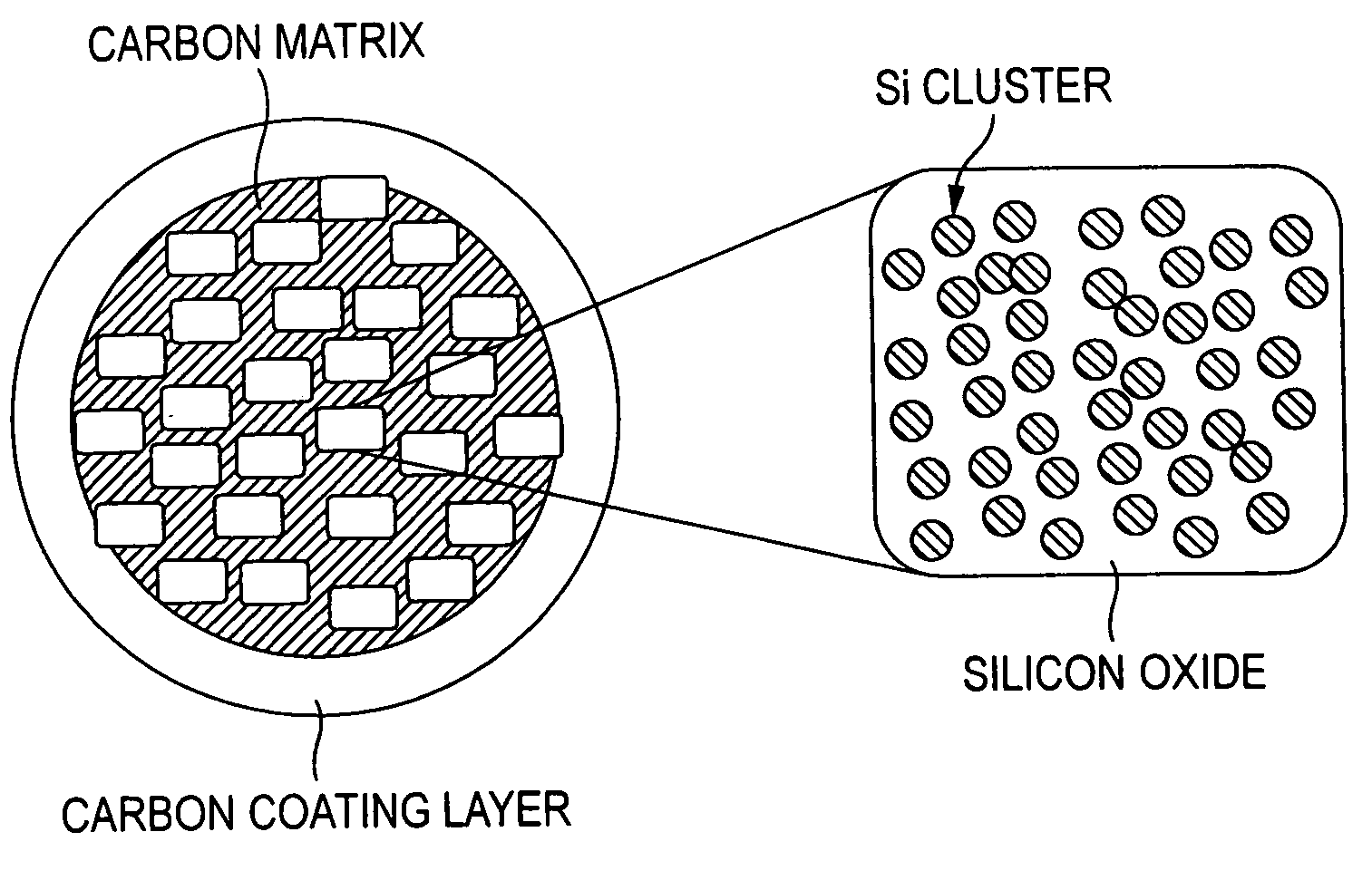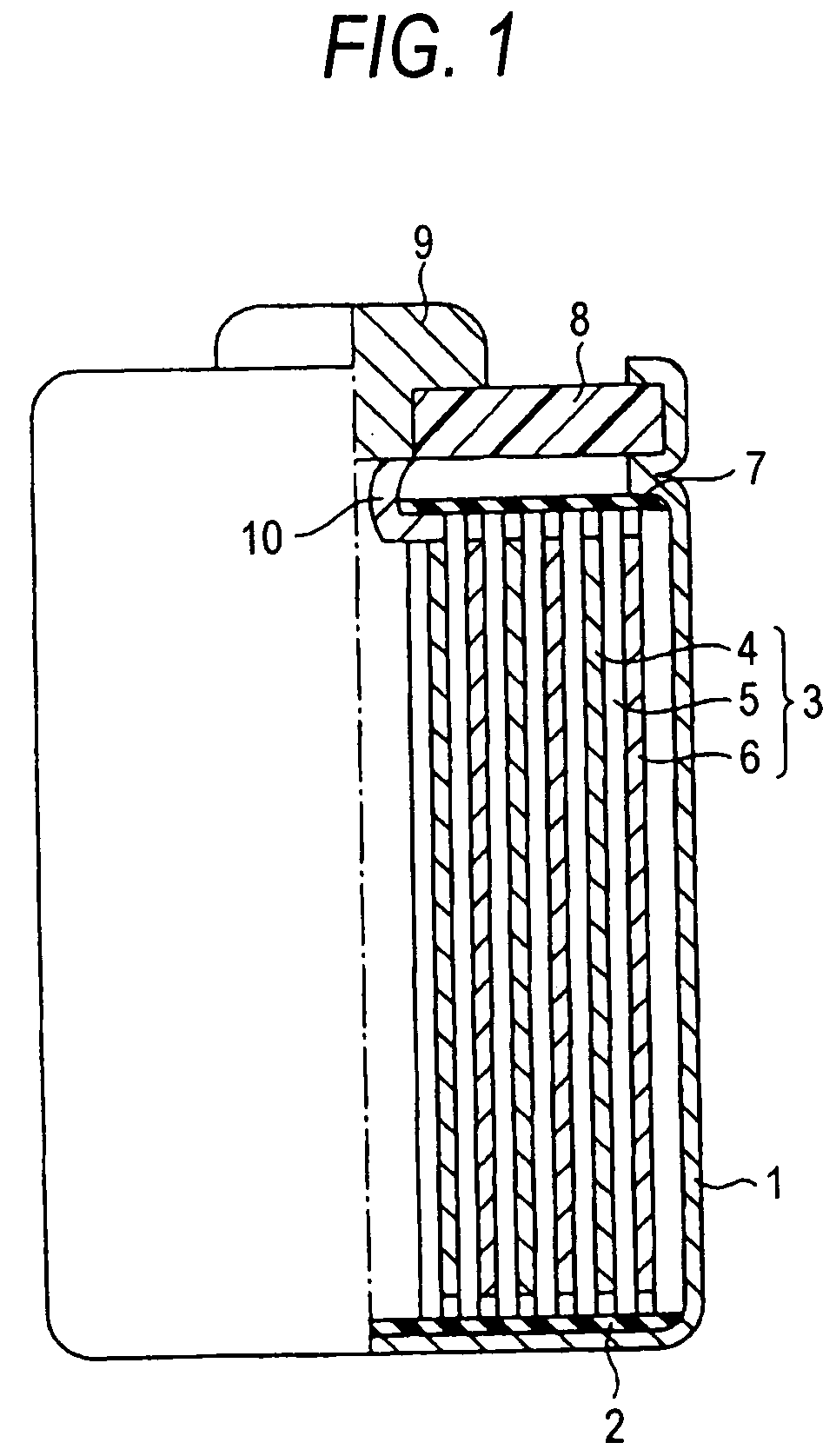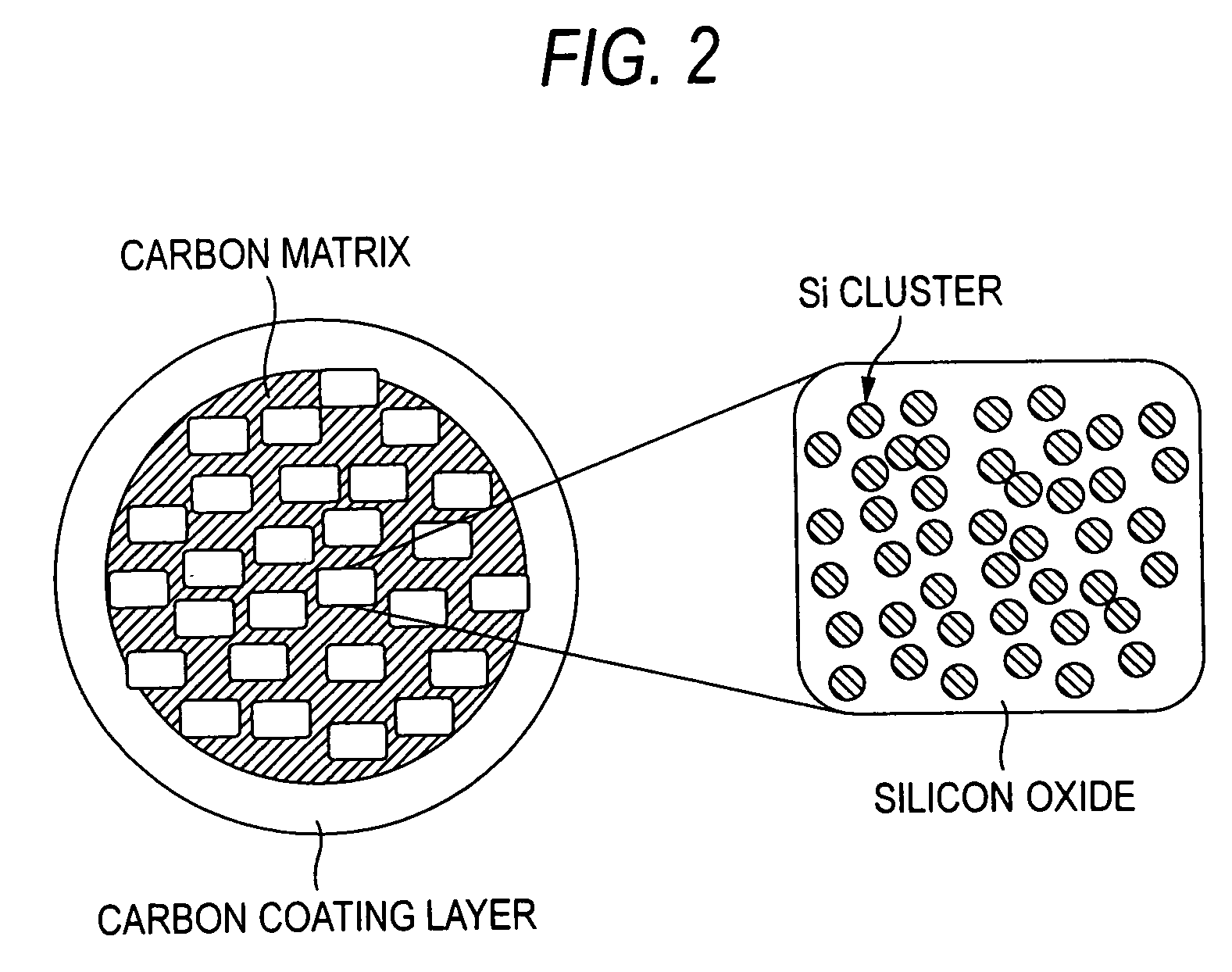Negative electrode active material for nonaqueous electrolyte secondary battery and nonaqueous electrolyte secondary battery
a technology of negative electrode active material and nonaqueous electrolyte, which is applied in the direction of active material electrodes, non-aqueous electrolyte accumulator electrodes, cell components, etc., can solve the problems of poor large current characteristics, short battery life, inferior capacity of graphitic carbon
- Summary
- Abstract
- Description
- Claims
- Application Information
AI Technical Summary
Problems solved by technology
Method used
Image
Examples
example 1
[0079] A negative electrode active material was synthesized by the raw material composition, the ball mill driving conditions, and the baking conditions, shown below. The ball mill used was a planetary ball mill (Model P-5, produced by Fritsch GmbH).
[0080] Upon dispersing in the ball mill, a stainless steel vessel having a capacity of 250 mL and balls having a diameter of 10 mm were used, and the amount of the raw materials to be dispersed was 20 g. 8 g of SiO powder having an average particle diameter of 45 μm and, as a carbonaceous matrix, 12 g of graphite powder having an average particle diameter of 6 μm were used as raw materials. The rotation number of the ball mill was 150 rpm, and the processing time was 18 hours.
[0081] Composite particles obtained by the treatment with the ball mill were coated with carbon in the following manner. 3 g of the composite particles were mixed with a mixed solution of 3.0 g of furfuryl alcohol, 3.5 g of ethanol and 0.125 g of water, followed b...
example 2
[0102] The silicon monoxide-carbon composite particles produced by combining in the same manner as in Example 1 were used, and the carbon coating was formed in the following manner.
[0103] The carbon coating was formed by using polystyrene. 2.25 g of polystyrene particles having a size of 5 mm were dissolved in 5 g of toluene to form a solution, to which 3 g of the composite particles were added and kneaded. The resulting mixture in a slurry form was allowed to stand at room temperature to evaporate toluene, whereby coated composite particles were obtained. The resulting particles were baked under the same conditions as in Example 1 to obtain a negative electrode active material.
example 3
[0104] The silicon monoxide-carbon composite particles produced by combining in the same manner as in Example 1 were used, and the carbon coating was formed in the following manner.
[0105] The carbon coating was formed by using cellulose. 1 g of carboxymethyl cellulose was dissolved in 30 g of water to form a solution, to which 3 g of the composite particles were dispersed and kneaded. The resulting slurry was allowed to stand at room temperature to evaporate water, whereby coated composite particles were obtained. The resulting particles were baked under the same conditions as in Example 1 to obtain a negative electrode active material.
PUM
 Login to View More
Login to View More Abstract
Description
Claims
Application Information
 Login to View More
Login to View More - R&D
- Intellectual Property
- Life Sciences
- Materials
- Tech Scout
- Unparalleled Data Quality
- Higher Quality Content
- 60% Fewer Hallucinations
Browse by: Latest US Patents, China's latest patents, Technical Efficacy Thesaurus, Application Domain, Technology Topic, Popular Technical Reports.
© 2025 PatSnap. All rights reserved.Legal|Privacy policy|Modern Slavery Act Transparency Statement|Sitemap|About US| Contact US: help@patsnap.com



